| home | virtual field trips | regional geology | images | e-learning | links |
This page is arranged roughly in stratigraphical order, and will be modified frequently. University of Derby students will find additional information and diagrams in the handouts which form part of the Sedimentology module.
Most photos can be enlarged by clicking on them.
Carbonate-producing organisms have varied through geological time, so modern reefs are different from those formed in the geological past.
There were periods of Phanerozoic time when the construction of reefs was important, notably the Ordovician, Silurian to Devonian, Mesozoic and Tertiary. At other times, reef formers were less important as producers of carbonate sediment.
During the Precambrian (>80% of geological time), the only reef * -building organisms were the cyanobacteria, a primitive group of photosynthesizing organisms which form cyanobacterial mats. Remains of these are found back to >3000 Ma. The cyanobacteria perform various different activities in sedimentary environments. We have already seen one example - bio-erosion and micritization of carbonate material by endolithic cyanobacteria. Other types of cyanobacteria (wrongly called 'blue-green algae') are the main component of microbial mats (often wrongly called algal mats).
[ * Not all carbonate workers would regard structures built by non-skeletal organisms as reefs]
|
Lyngbya. Filamentous cyanobacteria. Images courtesy of Cyanosite, Purdue University, Indiana. |
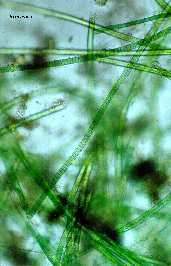 |
|
Filamentous cyanobacteria trap fine-grained carbonate (and sometimes non-carbonate, especially aeolian dust) sediment. They form gelatinous to leathery flexible sheets containing sticky organic matter (mucillage), to which sediment sticks. When the mat becomes covered in sediment, it grows another layer of filaments through and over the sediment, so it can continue to photosynthesize. Then another layer of sediment is trapped, building up in layers which are alternately organic-rich and sediment-rich. |
|
This combination of cyanobacterial mat and sediment is a stromatolite. Microbial mats allow fine-grained sediments to be deposited in environments whose energy would normally be too high for such deposition. The photosynthesis of the cyanobacteria removes CO 2 from waters within the mat, promoting the precipitation of CaCO 3 , often as early cement, which causes the mat to harden.
Modern stromatolites are found mainly in warm climates and very shallow water. They occur in shallow subtidal, intertidal environments, and may extend into the supratidal environment where the climate is humid. They also occur in freshwater. See:
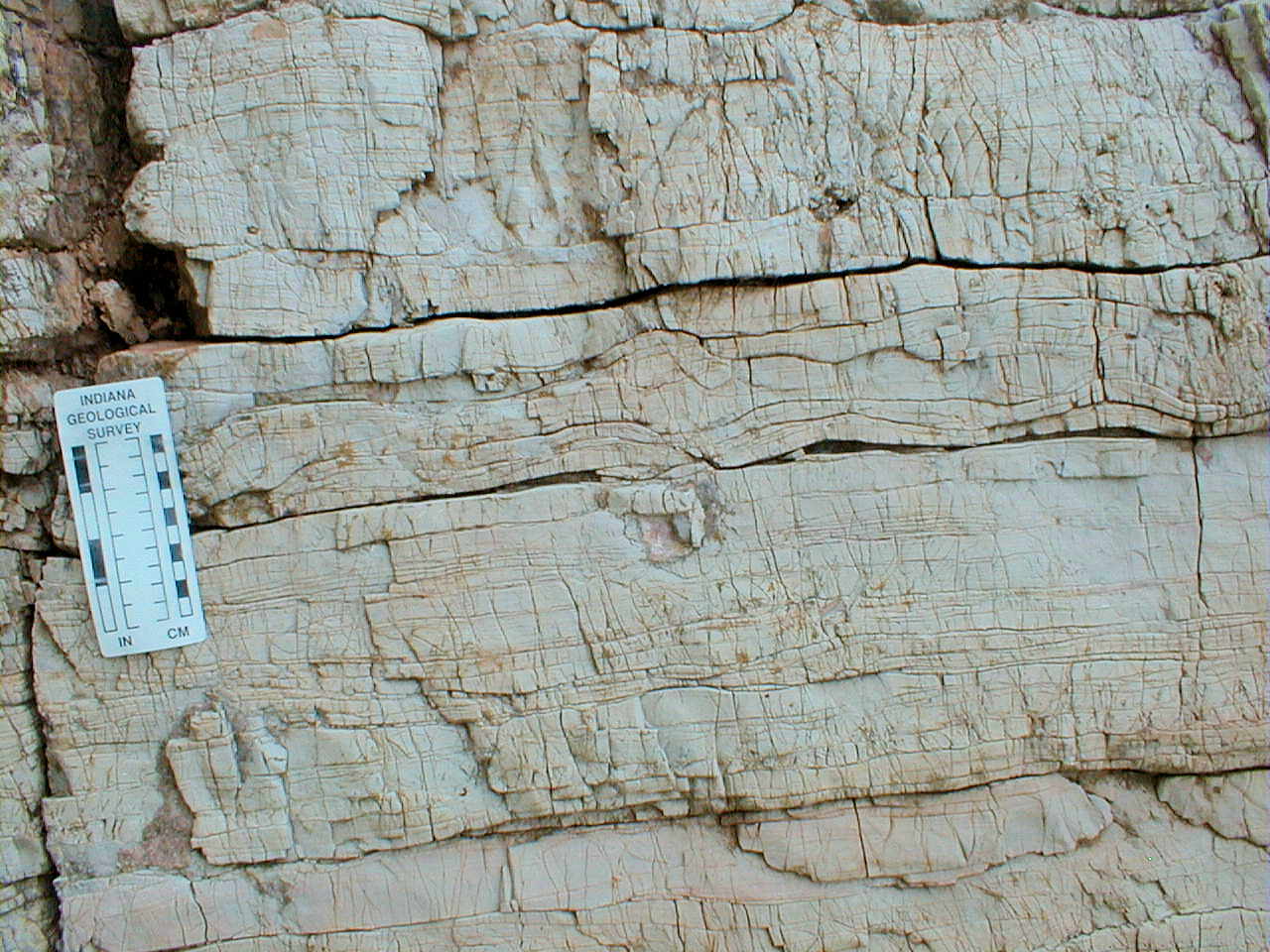 |
Stromatolites show a variety of forms, related to environmental conditions, such as energy level and rate of sedimentation. This is a simple example of parallel- to wavy-laminated stromatolites. More complex forms develop when energy and sedimentation rate are high. (Lower Jurassic, S France) |
Internally, stromatolites show distinctive textures:
|
(Lower Jurassic, S France) |
For example, they are well laminated on a mm or cm scale. Polished surface of simple laminite (left). Similar structures are seen in freshwater tufas, many of which are now interpreted as stromatolites (i.e. the products of microbial mats). |
Desiccation features are common in stromatolites, particularly those formed in the intertidal or supratidal environment. They often contain irregular cavities (fenestrae) parallel to the lamination, a form of primary porosity resulting from shrinkage and decay of the organic material of the mat.
Let us look now at examples of other organisms which have been important reef formers in the geological past.
Tabulate & rugose corals became common. Stromatoporoids appeared.
The main reef builders in the Silurian & Devonian periods were: tabulate & rugose corals; stromatoporoids.
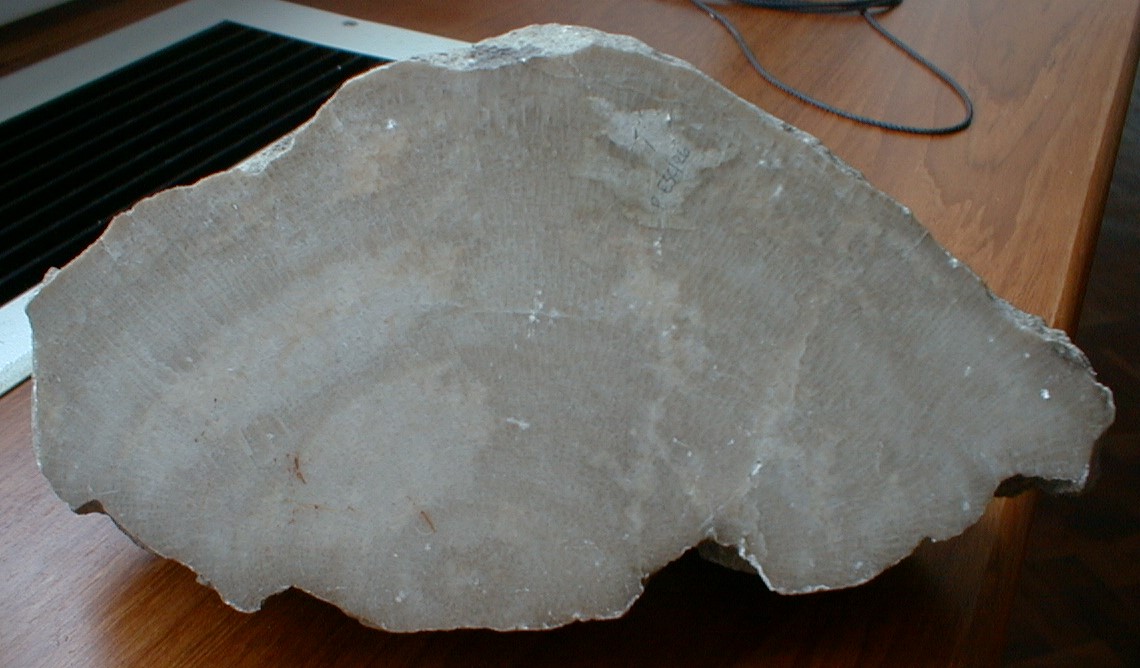 |
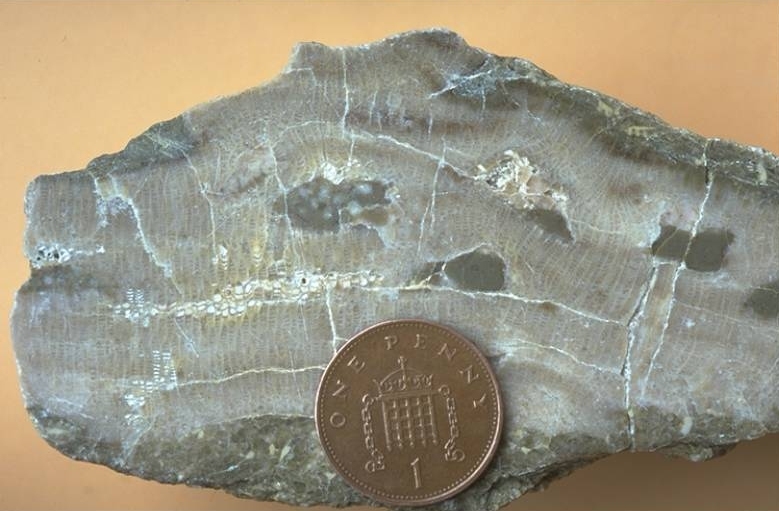 |
Favosites, a Silurian tabulate reef former from Wenlock Edge, England. |
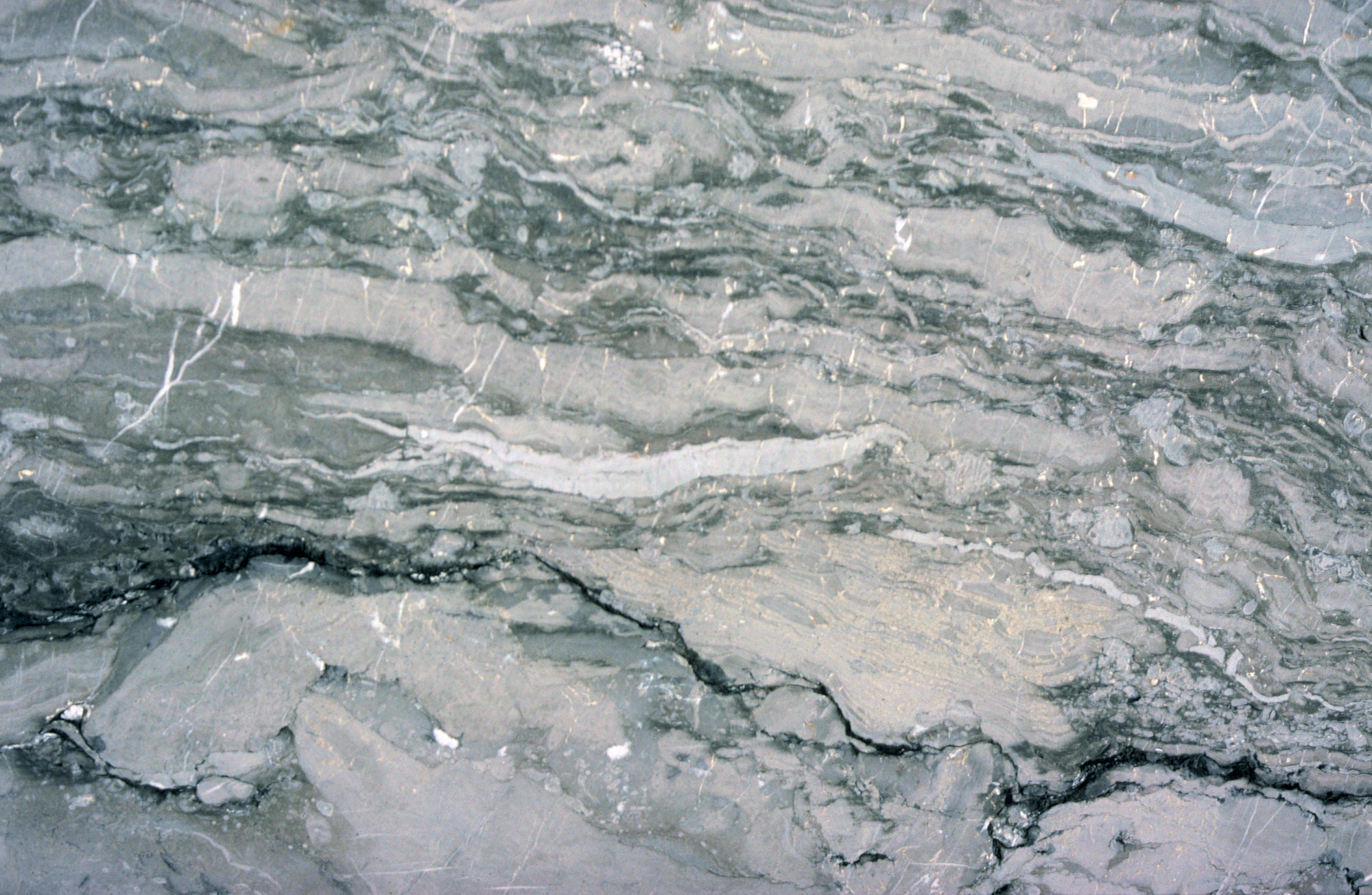 |
Cross section of massive reef rock in a quarry in the Meuse valley, S Belgium. The sheet-like colonies are mostly stromatoporoids, with some tabulate corals (lighter coloured lens, at centre). Compare with this Late Devonian reef reconstruction |
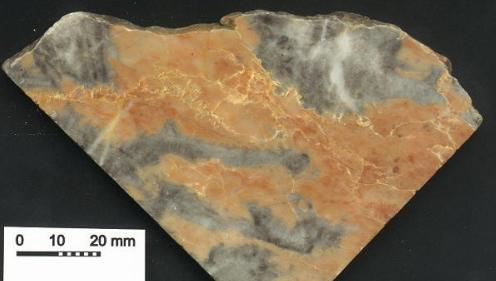 |
In this polished 'marble' slab, the red material is part of a micrite mud mound, and the white areas were cavities with planar floors and irregular roofs (possibly formed by collapsed sponges), later filled with calcite cement. Stromatactis from the Middle Devonian of S France. For more information, see:
|
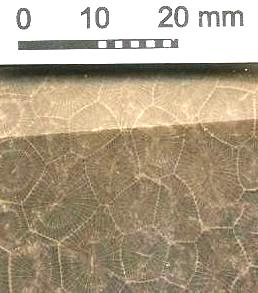 |
A Carboniferous reef-building rugose coral. Rugose & tabulate corals became extinct in the Permian. |
Reefs at this time were dominated by sponges, calcareous algae and bryozoa.
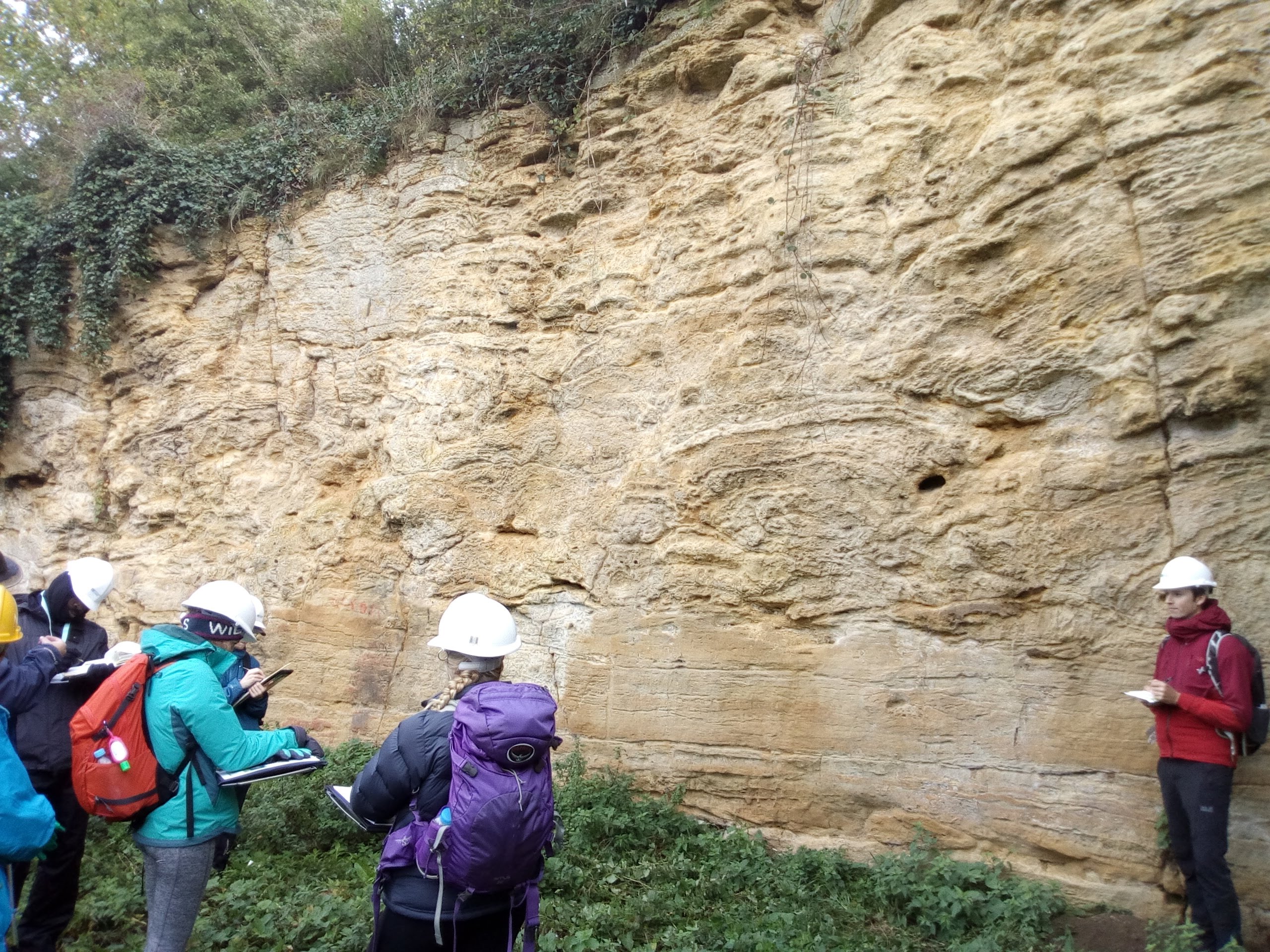 |
Permian reefs at
South
Elmsall, South Yorkshire, UK. The lower part of the face is in bedded
and cross-bedded bioclastic limestones, overlain by discontiuous massive bryozoan reefs, then by a thick development of dome-shaped stromatolites. |
|
|
Rudist bivalves have a similar morphology to some corals, but don't branch or bud, and there are no encrusters filling the gaps, because rudists are surrounded by sediment. They were supported by leaning on each other, and by the sediment. They grew rapidly.
|
Steeply dipping rudist reef limestones, Upper Cretaceous, Bugarach, Aude, S France. Images: Roger Suthren
|
Upper Cretaceous rudist 'reef' from S France. The rudist bivalves, in growth position, indicate the way-up of the bed. Between the fossils is sandstone. (Abbaye de Fontfroide, Aude)
|
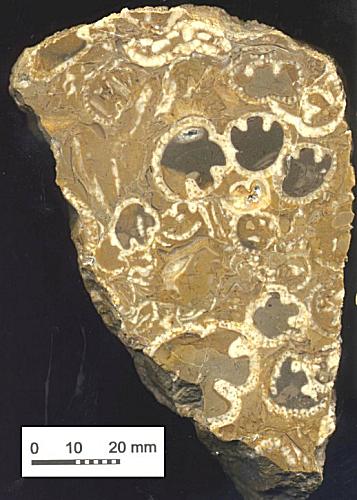
Cut section through part of a rudist 'reef' from Fontfroide. Note geopetal infills in some of the rudists.
|
More on rudist buildups:
|
Scleractinian corals continued as a major reef former in Paleogene and Neogene times. One well-studied example is the Miocene reefs of Mallorca.
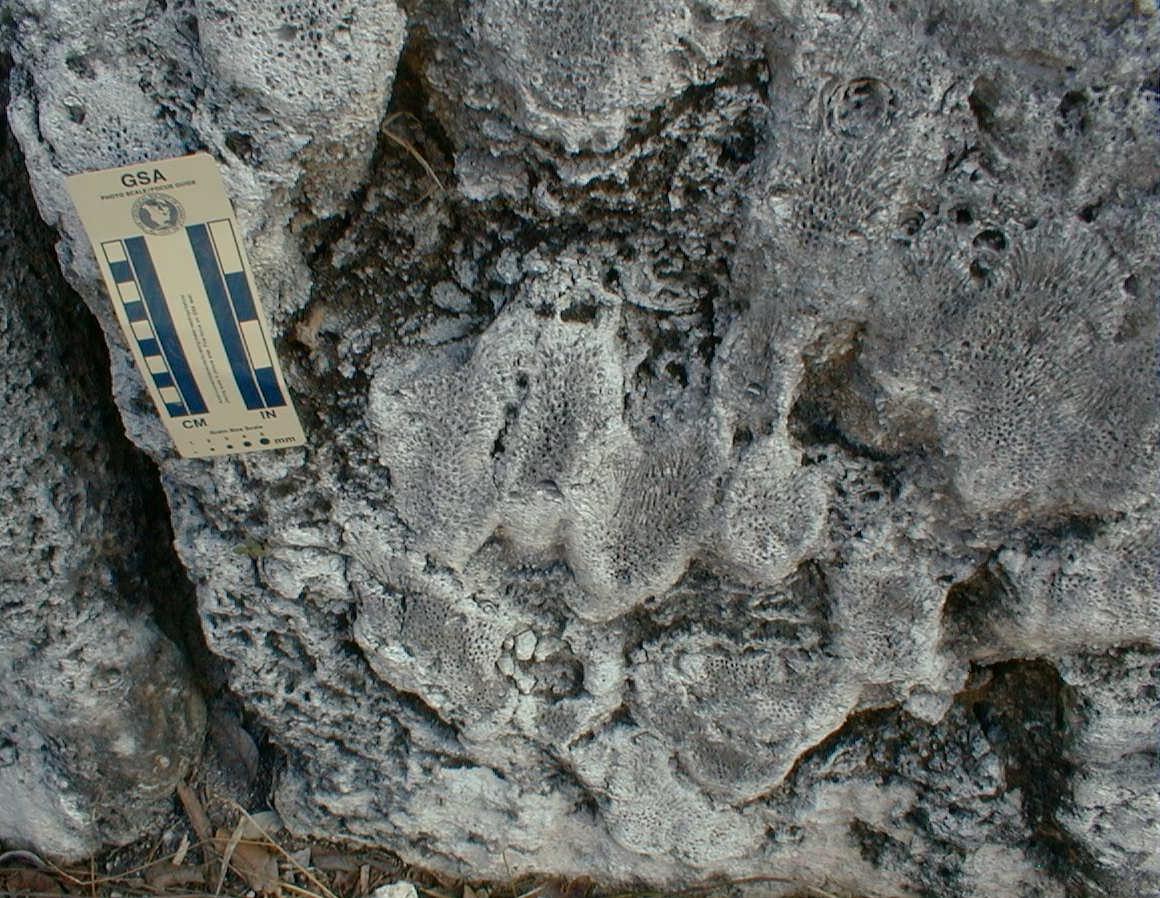 Scleractinian coral colonies in the Pleistocene Key Largo Limestone, Windley Key Quarry, Florida Keys |
|
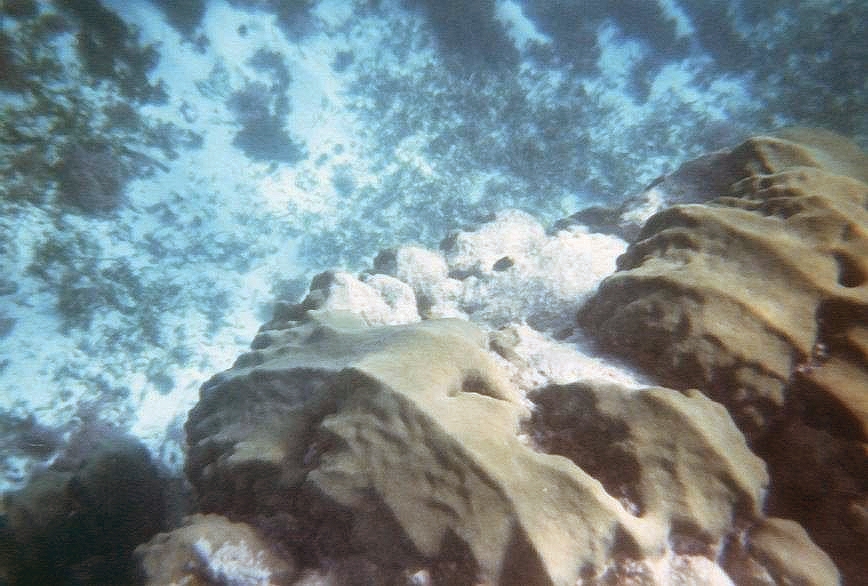 Modern reef at Key Largo Dry Rocks, Florida Keys. Note the large, massive scleractinian coral colonies |
Lecture 1: IntroductionLecture 2: Modern Reefs and BuildupsLecture 3: Reefs and Buildups through Time |
| sedimentology home |
![]()
This page is maintained by Roger Suthren. Last updated 16 March, 2021 15:51